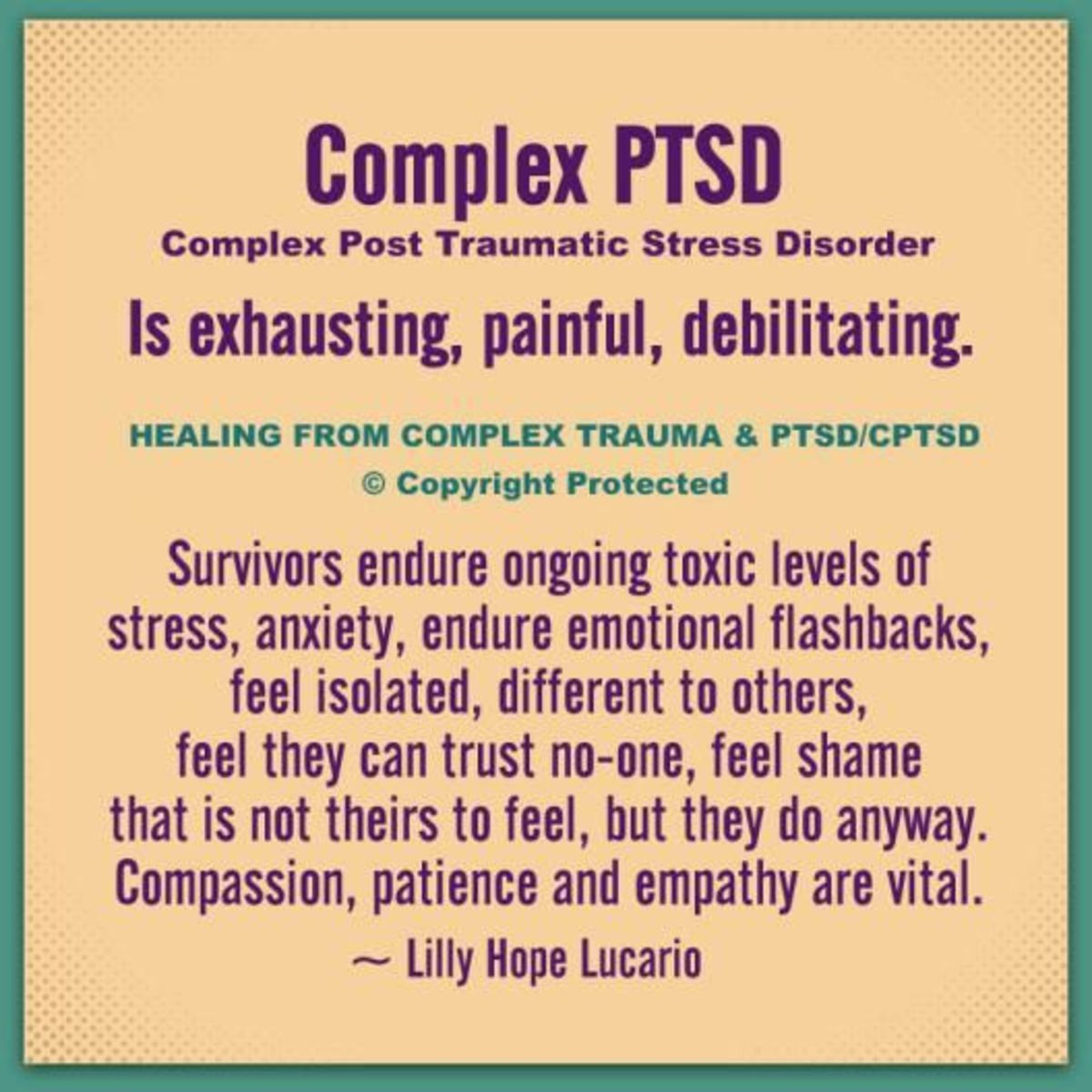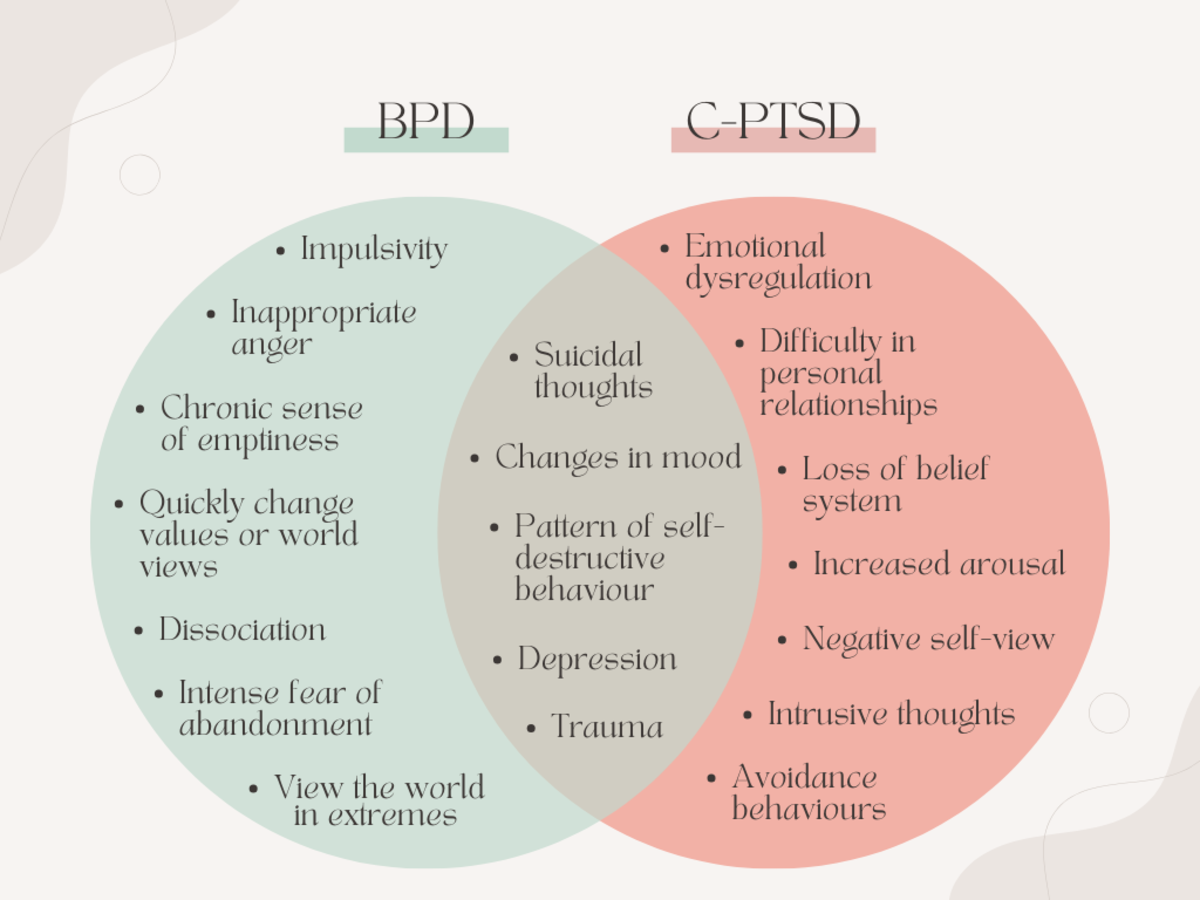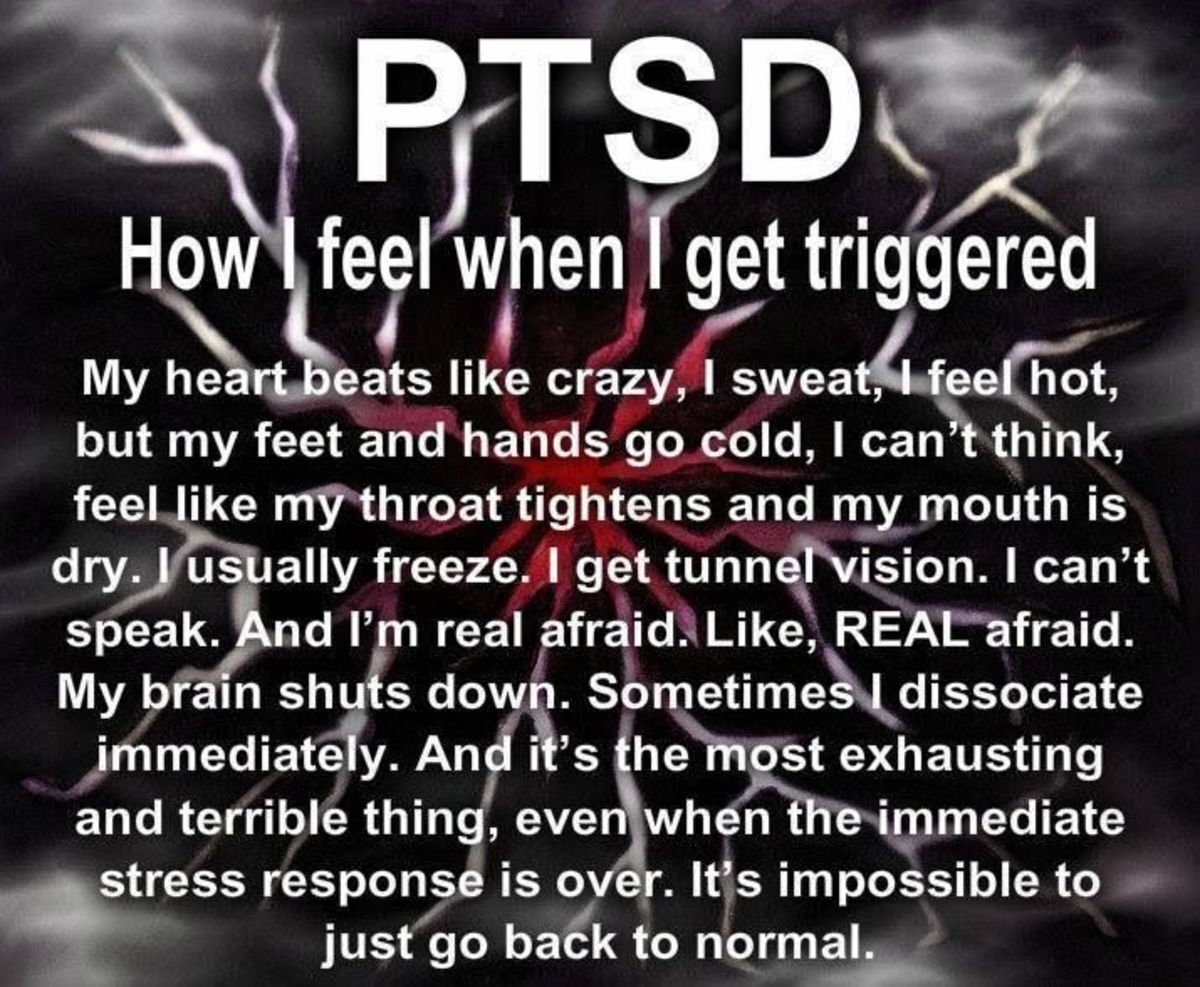- HubPages»
- Health»
- Mental Health»
- Anxiety Disorders
Tips for Having Resilience to Stress
Coping with Post Traumatic Stress Disorder
Post traumatic stress disorder (PTSD) is an anxiety disorder that some people get after experiencing a dangerous situation in life. A person of any age can get PTSD. Not every person that has post traumatic stress has been through a dangerous life situation. The death of a family member or friend can cause PTSD, or when a family member or friend is harmed also causes PTSD.
Symptoms of Post Traumatic Stress Disorder
- Feeling tense or on edge
- Feeling emotionally numb
- Frightening thoughts
- Losing interest in past enjoyable activities
- Having angry outbursts
- Flash backs that cause a racing heart or sweating
- Feeling strong guilt, worry, depression
Hyperarousal symptoms can make the person feel angry and stressed. Sometimes serious symptoms may go away after a few weeks. It's normal to have some of the symptoms after a dangerous event. Some people with post trauma stress disorder will not show any symptoms for many week or months.
Children with PSTD will have different reactions than adults such as: Being unusually clingy to parents, bed-wetting over the age of 4 and over, being unable to talk, or during playtime acting out frightening events. They may also develop destructive behavior, or become disrespectful. People with post traumatic stress disorder may have to get professional counseling to learn how to cope with it.

Resilience to Stress
After coping with PTSD the person will need to learn how to over-come the stress. Some people may get post traumatic stress disorder and some people may not get it, after a dangerous experience in their life. The people that don't get PTSD have a resilience factor which decreases the risk of stress.
Post traumatic stress disorder can be treated with either or both medication and psychotherapy (talk therapy). A person in an ongoing abusive relationship is also a traumatic situation, and needs treatment. Psychotherapy is "talk" therapy; this is when the PTSD patient talks to a professional to treat a mental illness. The doctor may offer different therapies for each individual that has PTSD, depending on what works for that particular person.
Exposure therapy assists people to face their fears and control them. Stress inoculation training teaches the patient on how to decrease their anxiety. Cognitive restructuring helps people with PTSD to see what happened in a realistic way, without the guilt and feelings of fault.
The medications that are approved by the U.S. Food and Drug Administration (FDA) for adults with PTSD are: paroxetine (Paxil), and sertraline (Zoloft). These medications are antidepressants, which are prescribed to patients that are depressed. These medications may assist with anger, sadness, feeling numb inside, depressed and worried. When taking these medications let your doctor know of any unusual side effects. And let your doctor know when you want to stop the medication; stopping the medications suddenly will cause a side effect of suicidal thoughts.
Factors of Stress Resilience
- Being able to act and respond through the feelings of fear.
- Finding support from friends and family that you can trust.
- Getting through and learning from a bad event; having a coping strategy.
- Seeking a counseling support group after the trauma.
- Having confidence in your own actions after facing dangerous trauma.
Antidepressant medications that may be prescribed:
- fluoxetine (Prozac) or citalopram which can decrease sadness, feeling tense, depression or anxiety.
- Benzodiazepines - This medication helps the person sleep and relax better.
- Anti psychotics - This medication is for people with other mental disorders such as schizophrenia.
One way to help lower the symptoms of stress is to imagine positive and joyful thoughts before going to bed every night. Just close your eyes and imagine hopeful and joyful things that you want to happen in your life, this is a powerful method for being resilient to PTSD. Using positive and joyful images in the mind before going to sleep will help decrease the PTSD. Also engage in normal activity or exercise to assist with reducing the stress such as: crocheting, writing articles, and/or doing physical exercises.
© 2012 Ann810








